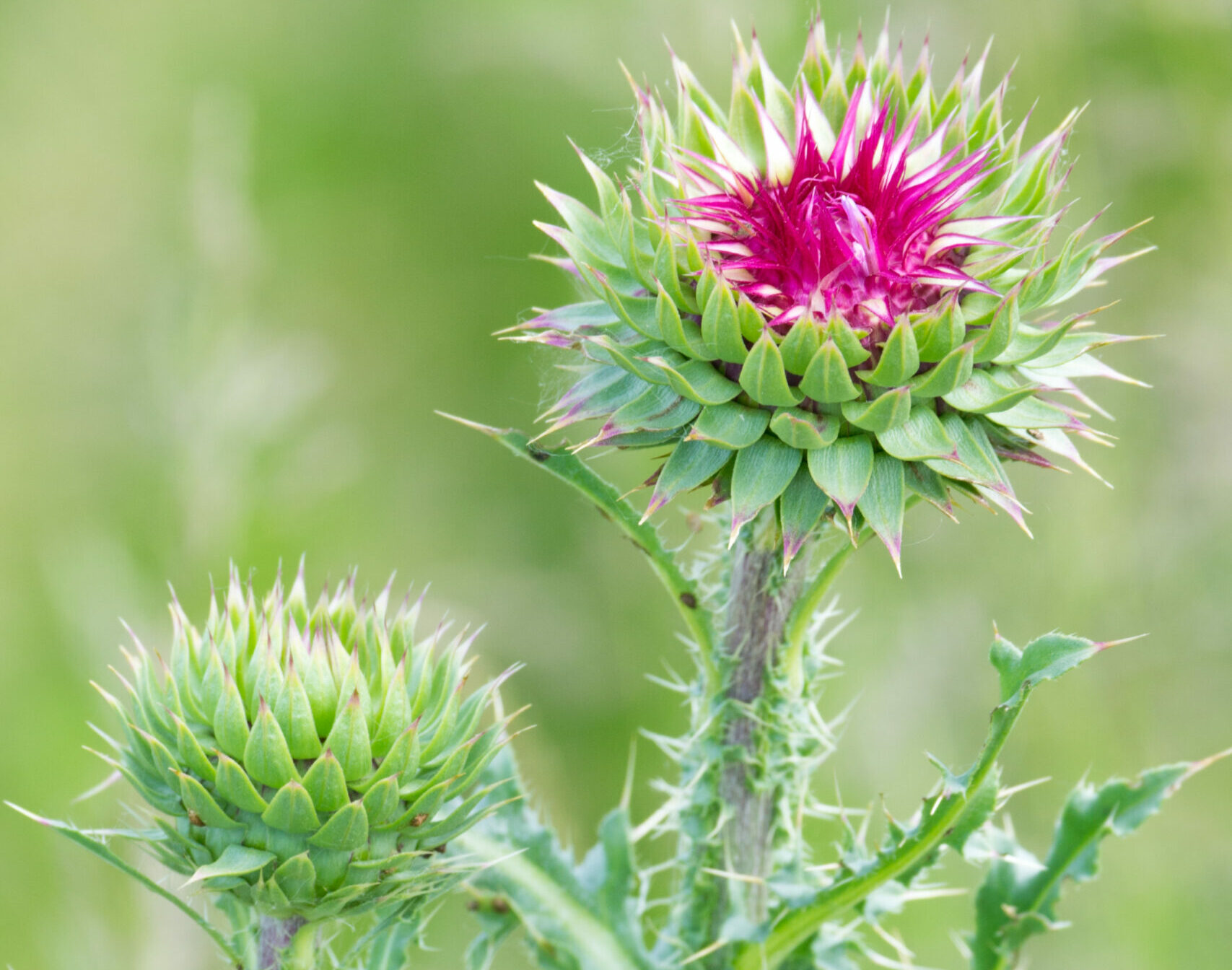Bristle for thistles that run amok

GALENA, Mo. — Thistles have taken advantage of grass stands weakened by drought, and many southwestern Missouri fields now have large amounts of musk and bull thistles, says University of Missouri Extension agronomist Tim Schnakenberg.
He reminds Missouri landowners that state law requires them to control all Canada, musk or Scotch thistles and prevent them from going to seed.
Taking care of thistles also makes for good neighbors. Thistle control is difficult, and it becomes harder when some landowners spot spray for control and others let large tracts of thistles go to seed, Schnakenberg says.
In a press release, Schnakenberg said, “When this happens, your thistles become everyone’s problem.”
Since thistles have already produced most of their seeds for the growing season, control measures are “after the fact now,” he says.
Most thistles are biennials. They germinate in fall, bolt with a seed head in spring, produce seed and die by mid-summer. Spraying is almost fruitless now since plants that have seeded out will die soon as they near the end of their lifespan.
Some people mow to control thistles, but the mowing deck can spread the seed to other areas, increasing the chance of fall germination. However, mowing may be the only option to get rid of the thistles at this time, Schnakenberg says.
More than 40 years ago, MU and USDA introduced the flower head weevil and rosette weevil to target thistles. There is evidence that these weevils consume many of the seed in the flower heads, but there is no way that the weevils can keep up with all the seed that is produced. Yet even at 30%-40% of the billions of seeds produced each year, the weevils are having an impact, says Schnakenberg.
“Look for dried seed heads and cut them open with a sharp knife for evidence of weevil damage,” he says. “Many times, you will find two to four flower head weevils in the heads. At this time of year, this is probably the best control available.”
However, biological control is not enough to keep thistles from going to seed, says Schnakenberg. The weevils need help.
This includes spraying according to label instructions at appropriate times with products such as 2,4-D, dicamba, Duracor, Grazon P+D, GrazonNext, Chaparral or other registered products. The best times to spray are when the plants are in the rosette stage. Luckily, this is the stage these plants are in for 70%-80% of their lifespan and corresponds with the ideal time to spray, which is fall (October) or early spring (March-April). Sometimes widespread broadcast spraying is necessary for control.
Mowing multiple times is also an option in spring or early summer. A Kansas study found that only 11% of the musk thistles mowed at the early bud stage died. When mowed a second time four weeks later, there was 79% control. The best time to mow is within two days after the terminal flower head blooms. This inhibits seed production and prevents rebolting. Remember, however, that viable seed can start to develop within seven days of the first pink coloring in heads.
For more information about thistle control or for help identifying the species of thistle, contact your local MU Extension agronomist.
Miss Clipping Out Stories to Save for Later?
Click the Purchase Story button below to order a print of this story. We will print it for you on matte photo paper to keep forever.

